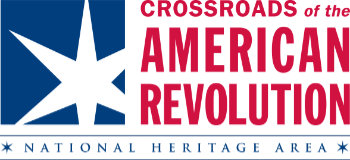Biography People
Francis Hopkinson Full Biography
1737 – 1791, Signer of Declaration of Independence
John Adams once described me as “one of your pretty, little, curious, ingenious men” with a head “not bigger than a large apple.” Although physically not cut out to be a soldier, I was enthusiastic and contributed to the Revolution with my “weapon”, my pen.
I was born in Philadelphia in 1737 and my father died when I was just fourteen years old. My mother managed our family well and signed me up as the first student in the new University of Pennsylvania. After graduating I studied law and continued living at home. I opened a store and married Anne Borden of Bordentown, New Jersey. About 1773 we moved to Bordentown and in 1774 I became Justice of the Peace for Burlington County and a member of His Majesty’s Council in New Jersey.
Although like most people I considered myself a loyal Englishman, by 1774 I was caught up in the feelings of anger with the acts of Parliament. In September that year I published a satirical allegory titled “A Pretty Story” relating how a just nobleman – the King – had let some of his children settle a wilderness. The good relationship between them deteriorated over time due to the greed of the “King’s Wife” – Parliament. My little piece was in its third printing before the beginning of 1775.
inting before the beginning of 1775. In 1776, with talk of independence growing I published another allegorical essay titled “The Prophesy.” It told the story of an “old tree” which needed to be cut down in order for a new tree to flourish. I also resigned my posts with the British colonial government and became a delegate to the Continental Congress from New Jersey where I voted for and then signed the Declaration of Independence.
In the Continental Congress I served on various committees including the Naval Board. Unfortunately, this position brought me into conflict with Commodore John Barry over the sinking of the frigate Effingham in the Delaware River near Bordentown to prevent the British from capturing it. Commodore Barry was told by Congress to apologize to me after shouting “D—n you!” at me and treating me with “indecency and disrespect” during one of our heated arguments about the ship.
In addition to writing, I also fancied myself something of a designer and became involved with designing a flag for the Navy. This design was later adopted as the flag of the United States. I designed other things as well, including the official seal of the State of New Jersey. Although I felt I should be reimbursed for all this work, I was never paid.
I also used my literary and musical talents to help the morale of the people. One of my more famous compositions was called “The Battle of the Kegs.” This song told the story of the attempt by several people, including my father-in-law, to destroy British warships in the Delaware River by floating wooden kegs filled with gunpowder among the British ships. The kegs proved rather harmless, but the British fleet wasted a lot of valuable ammunition shooting wildly at them. My mockery of the British reaction seemed to raise the morale of the Patriots.
I suffered losses from two lootings of my Bordentown home by the Hessians in 1776 and 1778. My house survived, unlike the home of my father-in-law across the street, but many of my books and manuscripts were taken away. A Hessian officer wrote about me on the flyleaf of one of the books later recovered. He wrote, “This man was one of the greatest rebels, nevertheless if we dare to conclude from the library and mechanical and mathematical instruments, he must have been a very learned man.” In spite of my suffering I later wrote, “I have suffered much by the Invasion of the Goths & Vandals. I was obliged to flee from my House at Borden Town with my Family & leave all my Effects in Status quo; the Savages plundered me to their Hearts’ content–but I do not repine, as I really esteem it an honour to have suffered in my Country’s Cause in Support of the Rights of human Nature and of civil Society.”
After the war I continued to serve in the government and promoted ratification of the Constitution with a fable titled “The New Roof.” I helped organize a parade for July 4, 1788 to celebrate ratification and its inclusion of a wide range of people made it a long-remembered demonstration of the democratic and open-minded spirit of its times.
I died in May 1791 at age 53 and one of my obituaries stated that the history of the causes leading to the establishment of the United States “will not be fully traced unless much is ascribed to the irresistible influence of the ridicule which he poured forth from time to time upon the enemies of these great political events.” Hastings, George Everett. The Life and Works of Francis Hopkinson. Chicago: University of Chicago Press, 1926.
“Francis Hopkinson: Jurist, Wit and Dilettante.” Marble, Annie Russell. Heralds of American Literature: A Group of Patriot Writers of the Revolutionary and National Periods. Chicago: University of Chicago Press, 1907.
Miscellaneous Essays and Occasional Writings of Francis Hopkinson, Esq. Philadelphia: T. Dobson, 1792.
“Hopkinson Family Papers”, Collected by Historical Society of Pennsylvania, Philadelphia, 1978.
Griffin, Martin. The Story of Commodore John Barry. Project Gutenberg, 2008.
